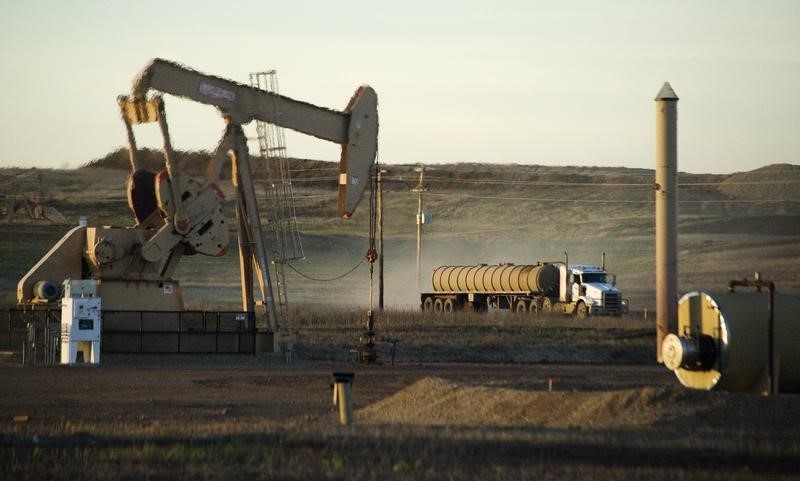
Investing.com — Analysts at UBS in a note dated Monday have revised down its oil price forecasts for the period 2024-2026, citing weaker global demand and a more stable supply outlook.
The new forecast for oil in the fourth quarter of 2024 has been reduced to $75 per barrel from $83, bringing the 2024 average price down by $4 to $80 per barrel.
This bearish adjustment reflects the bank’s view of a softer global demand environment, compounded by slower economic growth in key markets, particularly China.
For 2025 and 2026, the Brent forecast has also been lowered by $5 to $75 per barrel.
UBS analysts also suggest that OPEC+ will be forced to postpone the unwinding of its voluntary production cuts, with any meaningful increases likely delayed until 2027 or 2028, compared to earlier expectations of a return by mid-2025.
This shift comes as the market remains finely balanced, with weaker demand and steady non-OPEC+ supply growth reducing the need for OPEC+ to ramp up output.
OPEC+ had planned an output increase in October 2024, but that has now been postponed by two months.
“The market is just about balanced next year, assuming no unwind. In the near term, we still see it in deficit in 2H24 and inventory draws should be supportive, especially given the extremely low net positioning on crude,” the analysts said.
Weaker demand growth has emerged as a key downside risk for oil prices. UBS revised its 2024 global demand growth down by 0.1 million barrels per day (Mb/d) to around 1 Mb/d.
The brokerage attributes this primarily to a slowing Chinese economy, a major driver of global oil consumption.
China’s demand growth forecast has also been cut by 0.1 Mb/d, now expected to grow by 0.3 Mb/d in 2024. UBS has downgraded its Chinese GDP forecast to 4.6%, from an earlier projection of 4.9%.
For 2025, UBS predicts slightly lower demand growth, forecasting an increase of around 1 Mb/d, while the International Energy Agency (IEA) and OPEC present a range of expectations for that year, from 1.0 Mb/d to 1.7 Mb/d.
The subdued demand outlook underscores the likelihood of softer prices, barring any major supply disruptions or shifts in economic conditions.
Higher-than-expected non-OPEC+ supply is further loosening market balances. UBS has revised up its non-OPEC+ supply growth forecast by 0.1 Mb/d for both 2024 and 2025, driven primarily by rising U.S. output.
U.S. liquids production is projected to grow by 0.6 Mb/d in 2024 and 0.8 Mb/d in 2025, largely from liquids (NGLs).
However, UBS suggests that U.S. crude oil production growth will slow until the first quarter of 2025, due to muted drilling activity and potential weather-related impacts.
U.S. shale producers continue to exercise capital discipline, slowing rig deployment and focusing on efficiency, which may restrain future production growth.
UBS foresees a range of possible outcomes for oil prices, projecting a likely trading range of $65 to $85 per barrel for Brent.
Prices could rise toward the upper end of this range if demand growth exceeds expectations or OPEC+ adheres strictly to its production cuts.
An escalation in geopolitical tensions, especially in the Middle East, could drive Brent prices above $90 per barrel.
Conversely, a global recession poses the primary downside risk. In this scenario, reduced demand could push oil prices into the $60s.
Should OPEC+ decide to increase production rapidly to defend its market share, particularly in the face of non-OPEC+ supply growth, prices could fall below UBS’s forecast range.
UBS continues to forecast modest global demand growth until the late 2020s, after which it expects a sharp slowdown.
Factors such as increasing vehicle fuel efficiency and the accelerating adoption of electric vehicles (EVs) are seen as major contributors to this shift.
The brokerage predicts that oil demand growth will slow to 0.5 Mb/d within the next three to four years, with peak demand likely to be reached by 2029.
By 2030, UBS expects rising EV penetration to replace 3.4 Mb/d of oil consumption globally, up from just 0.9 Mb/d in 2024. This trend is likely to put sustained downward pressure on long-term oil demand.

